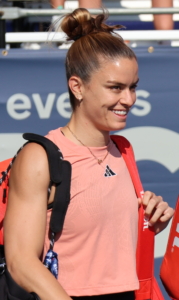Inside the Lion’s Den: Sydney McLaughlin-Levrone
Inside the Lion’s Den: Sydney McLaughlin-Levrone
You may not know the name Sydney McLaughlin-Levrone—but every serious competitor should study her mindset.
So who is she, and what can this Olympic champion teach us about the mental game of peak performance?
Results That Speak for Themselves
At just 25, McLaughlin-Levrone has already secured her legacy:
-
4 Olympic gold medals
-
12 straight victories in the 400m hurdles
-
6 world records broken in just three years
She’s not merely outrunning the competition—she’s redefining the limits of what’s possible. But behind the results lies a deeper story: one of transformation, faith, and elite mental discipline.
From Fear to Faith: Rewiring the Mindset
Earlier in her career, McLaughlin-Levrone was overwhelmed by nerves—so much so that she would feel physically ill before big races. Her turning point came not from technique, but from perspective.
“I felt like I had to win to be valued. That pressure consumed me.”
Most tennis players know this feeling well. Whether it’s the tightness before serving out a set, the fear of letting down a team, or the internal spiral after a couple of errors, the pressure to “prove” yourself can hijack your game. Like Sydney, shifting focus from results to process—anchoring in rituals, breath, and intention—can free you to compete with clarity instead of fear.
Competing Against Yesterday
Even with her dominance, Sydney’s focus isn’t on the field—it’s on her own reflection.
“I’m always asking: how can I be better than I was yesterday?”
It’s not about chasing perfection. It’s about becoming just a little sharper, smarter, and steadier every day.
Loving the Discomfort
Every competitive match has its turning points—when your game feels off, your opponent catches fire, or pressure starts to build in tie breakers. In these moments, discomfort isn’t just common—it’s necessary. The best players don’t avoid it. They learn from it.
-
Push through frustration when your shots aren’t landing and your rhythm disappears
-
Stay composed after mistakes, like a double fault or a lost set
-
Trust the work you’ve done, especially when executing new techniques under pressure
-
See tough opponents as mirrors, revealing where your game needs to grow
McLaughlin-Levrone calls this “entering the lion’s den”—a space where control fades, and adaptation becomes your edge.
Discomfort isn’t a sign of falling apart—it’s a signal that you’re learning, adapting, and evolving as a competitor.
A Family Foundation of Joy
Sydney’s story began in a New Jersey household where track was introduced without pressure. Her father, a former runner, coached her and her siblings like a family team—not professionals.
“He told us to be the butterfly—just go and do what you do.”
That early emphasis on joy and freedom still echoes in her approach today. Whether it’s the Olympic final or a practice session, she competes with purpose but without panic.
Tennis Mindset Lessons
-
Detach identity from match results: You are more than your UTR, your win-loss record.
-
Improve by 1% each session: Focus on refining one element at a time.
-
Train where it’s uncomfortable: Growth lives at the edges of your ability.
-
Build habits, not just goals: Rituals and routines create consistency under pressure.
-
Create calm through preparation: Breathing, visualization, and ritual can reset your nerves.
Wrap
Sydney McLaughlin-Levrone is more than an athlete—she’s a case study in composure, growth, and purpose-driven competition. Her example reminds us that high performance isn’t just physical—it’s deeply mental and emotional. And especially for the average tennis player!
You don’t rise to the occasion—you fall back on your training. And mindset is where that training begins.





